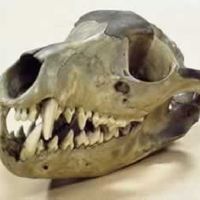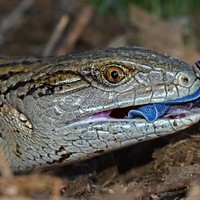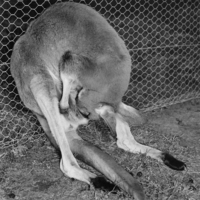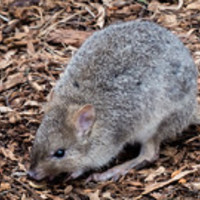Theodore Thomson FlynnTasmania's first Professor of Biology
Zoological research
Flynn is credited with being one of the first scientists to warn of the thylacine’s impending extinction
David Owen & David Pemberton, 2005 Tasmanian Devil: A Unique and Threatened Animal
Flynn is considered to be one of the pioneers of research into the reproductive biology of Tasmanian marsupials and monotremes. A complete Thylacine skeleton collected by Flynn is in the Tasmanian Museum and Art Gallery Collection.
Professor Flynn's first paper was on the anatomy of the Tasmanian Devil (Sarcophilus harrisii) in 1910. He advocated for the protection of the Thylacine (Tasmanian Tiger) and the Tasmanian Devil by suggesting removing some of the species to a smaller island. Research to save the Tasmanian Devil from extinction continues through the ongoing work of The Immune Response of the Tasmanian Devil & Devil Facial Tumour Disease research group at the University's Menzies Institute for Medical Research.
Flynn became famous for his work on the embryology of marsupials and echidnas. He became determined to educate the public that kangaroos were not born on the nipple.
Eric Guiler, School of Zoology, 1928.
In 1921 Professor Flynn was awarded a Doctorate in Science a for his research on the embryology of marsupials. In 1928 he held a lecture published by the Workers' Educational Association of Tasmania about marsupials,particularly kangaroos birthing habits. He also published a paper on the reproduction of the Tasmanian Bettong (Bettongia gaimardi), which was the culmination of 10-15 years work.
Flynn's interest in the placental structure of blue-tongued lizards continues to be echoed by the School of Zoology’s strong research focus on the ecology and evolution of lizards.
Flynn's marsupial research papers
- Flynn, Theodore Thomson 1928 , The Problem of the Birth of the Kangaroo , University of Tasmania Library Special and Rare Materials Collection, Australia.
- Flynn, Theodore Thomson 1930 , The Uterine Cycle of Pregnancy and Pseudo-Pregnancy as it is in the Diprotodont Marsupial Bettongia Cuniculus , University of Tasmania Library Special and Rare Materials Collection, Australia.
- Flynn, Theodore Thomson 1911 , Notes on Marsupialian Anatomy I. On the Condition of the Median Vaginal Septum in the Trichosuridae , University of Tasmania Library Special and Rare Materials Collection, Australia.
- Flynn, Theodore Thomson 1911 , 'Notes on Marsupialian anatomy II. on the female genital organs of a virgin sarcophilus satanicus.' , Papers and Proceedings of the Royal Society of Tasmania , pp. 144-161 .
- Flynn, Theodore Thomson 1911 , 'Notes on Marsupialian anatomy. I. On the condition of the median vaginal septum in the Trichosuridae.' , Papers and Proceedings of the Royal Society of Tasmania , pp. 120-123 .
- Flynn, Theodore Thomson 1923 , The Yolk-Sac and Allantoic Placenta in Perameles , University of Tasmania Library Special and Rare Materials Collection, Australia.





